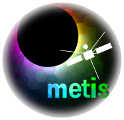Speaker
Description
Coronal Mass Ejections (CMEs) are one of the main drivers of the most severe Space Weather disturbances. It is often assumed that CMEs evolve self-similarly during their propagation in interplanetary space. However, shape distortions have been reported in both simulations and observations. Multi-viewpoint studies of these complex and distorted events are fundamental to test Space Weather models and obtain reliable time-of-arrival predictions.
This work reports on a distorted and Earth-directed CME observed by several spacecraft on 2022 March 25. The distortion during its interplanetary evolution is evident in both latitude and longitude thanks to the almost quadrature of Solar Orbiter with the Solar Terrestrial Relations Observatory. We show a detailed analysis of this event by comparing both remote-sensing observations and in-situ measurements. The different viewpoints allowed us to use a Graduated Cylindrical Shell (GCS) model to obtain the geometry and trajectory of the evolving CME. Through a drag-based model (DBM), we improve the GCS estimated time of arrival (ETA) of the interplanetary CME at different heliocentric heights. The evolution of the CME is also compared with the predictions from the Wang-Sheeley-Arge (WSA)-Enlil model at both the ecliptic plane and the north-south cut along the Sun-Earth line. Remote-sensing observations, models, and in-situ data suggest that the interaction with different solar wind speed streams affected the CME shape and velocity. The ETA predicted by the GCS, the DBM, and the WSA-Enlil, are compared with the in-situ measurements at different points in the heliosphere to test the goodness of the forecasting for these complex events.
Metis can have a fundamental role in these studies by giving information on the CME shape in the gap between the Solar Orbiter/Full Sun Imager (FSI) field of view (where the CME has a symmetrical shape) and the Solar Orbiter Heliospheric Imager (SoloHI) field of view (where the CME is already distorted).

